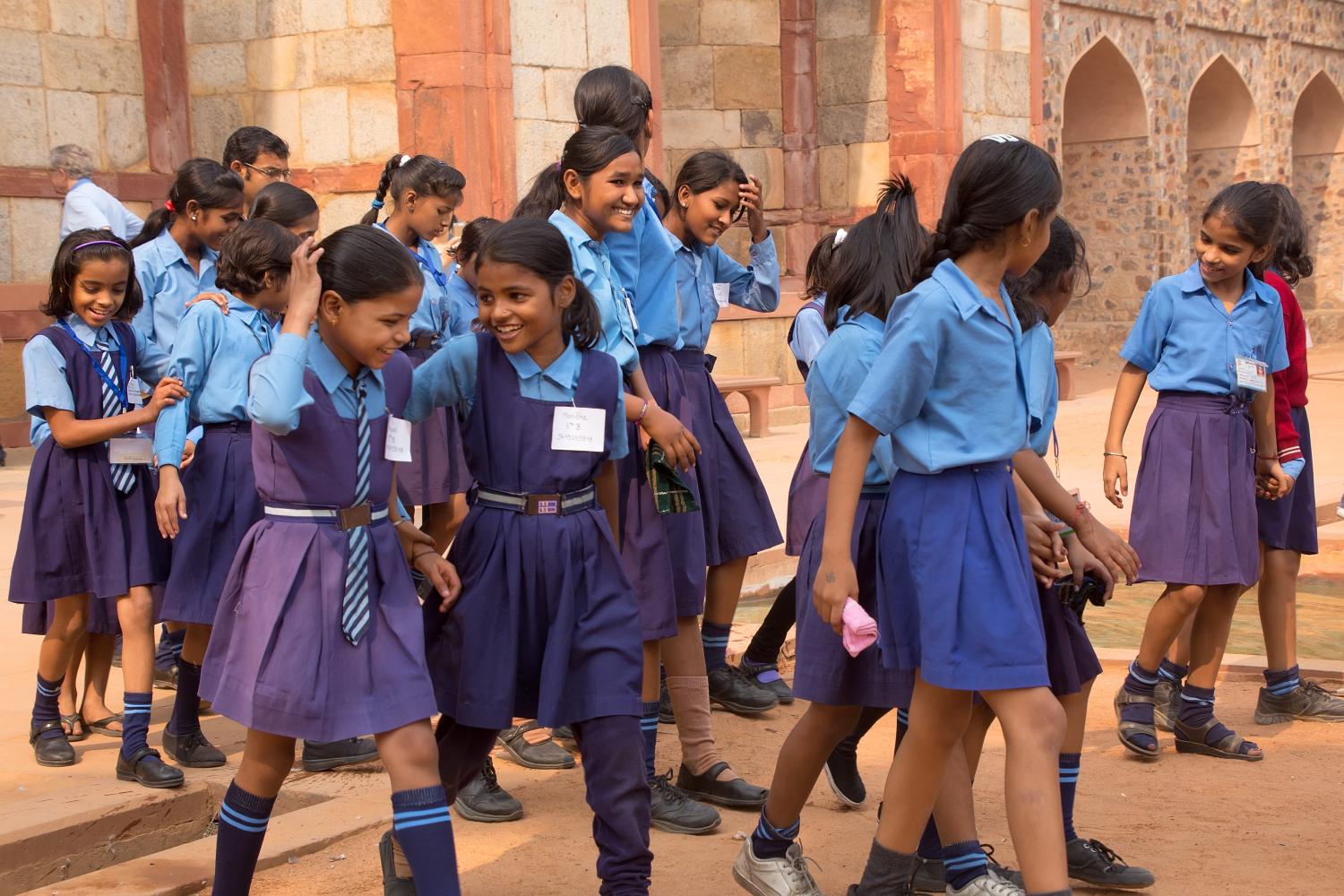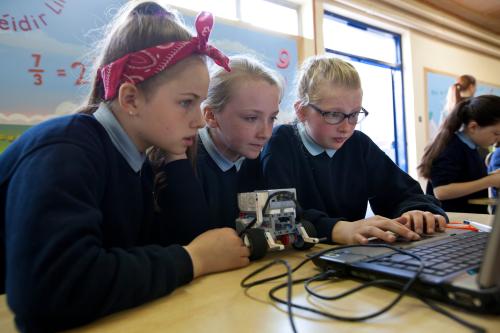The Happiness Curriculum is made up of compulsory 45-minute daily lessons with the aim of developing mindfulness, critical thinking, reflection, and social-emotional skills among students in more than 1,000 government-run schools in Delhi, India.1 Three units–Exploring Happiness through Learning and Awareness; Experiencing Happiness in Relationships through Feelings; and Happiness through Active Participation–based on a “triad of happiness” and the philosophy of coexistence are taught from nursery to grade 8. This case study outlines the inception, implementation, and impact of the Happiness Curriculum in the context of broader education reforms in Delhi.
Responding to the needs of Delhi’s students, as well as to global trends advancing students’ well-being, the Happiness Curriculum was developed in 2018 by the Delhi government in conjunction with quasigovernmental bodies and five partner NGOs. In line with shifting away from purely academic outcomes to more holistic aims, adjacent education reforms by the Delhi government primed the system both culturally and logistically to accept large-scale interventions like the Happiness Curriculum. These were: investment in education infrastructure; the introduction of mentor teacher programs; the devolution of power and finances to school management committees (SMCs); reflective workshops for the Happiness Curriculum team, school staff, and teachers; and the introduction of other Mindset Curriucula. The implementation of the curriculum was further enabled by the large-scale launch of the intervention and attention to organizing new teacher training processes, including a cascade model, overcoming initial resistance from teachers, and maintaining intensive and recurring training.
The key tensions that emerged from the analysis were between remedial academic teaching and the need for well-being interventions following the COVID-19 pandemic; initial resistance from teachers on the ground against the strong political will of the government launching the curriculum; and the challenge of effectively translating the curriculum to other states in India with poorer resources or geographical differences.
Lessons in large-scale and effective implementation can be drawn, with key lessons of a large-scale launch, a high specification for ease of implementation, clear feedback loops, and material investment being identified in our analysis. At the same time, challenges of running the curriculum during the pandemic and reconciling the differences between a still-existing academic focus with holistic student development, are significant considerations in the design of similar interventions.
|
The summary report “Transforming education for holistic student development: Learning from education system re(building) around the world” lays out 10 key lessons for transforming education systems, which are all exemplified in this case study. In particular, this case study highlights the need to:
1. Build social infrastructure: Build a social infrastructure that engages stakeholders about holistic student development and the entailments for instruction.
2. Distribute leadership: Develop and distribute leadership for instruction by, among other things, cultivating educator and student agency.
3. Support infrastructure use: Support the use of educational infrastructure in school and classroom practice through professional learning.
4. Monitor practice and performance: Conduct consistent, ongoing monitoring of practice and performance for continuous improvement and professional learning. |
-
Footnotes
- This case study is a companion to “Transforming education for holistic student development: Learning from education system (re) building around the world” (Datnow et al., 2022), a summary report that explores the work of building and rebuilding education systems to support holistic student development in six education systems in Singapore, Ireland, Chile, Canada, India, and the United States and in one cross-national system (the International Baccalaureate). While different in many ways, the seven systems bear remarkable similarities in their efforts to (re)build education systems—each is working in policy contexts pressing for academic quality and equity, while also facing additional incentives to support holistic student development.
The Brookings Institution is committed to quality, independence, and impact.
We are supported by a diverse array of funders. In line with our values and policies, each Brookings publication represents the sole views of its author(s).







